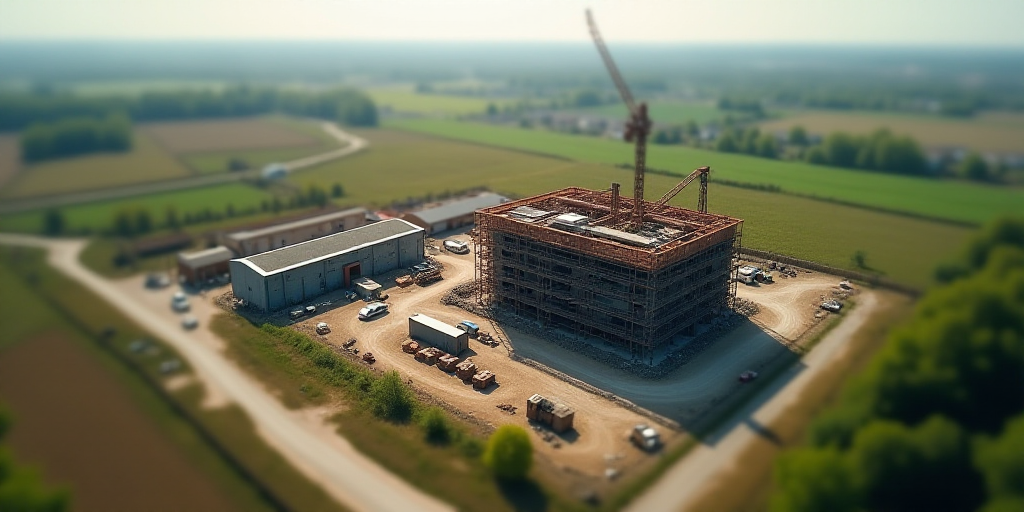Introduction
Aguascalientes, Guanajuato, Jalisco, Querétaro, and San Luis Potosí are collaborating on a regionalization strategy that was initially signed years ago and has since evolved into the Agency for Economic Cooperation Centro-Bajío-Occidente (CBO).
Economic Objectives
The primary economic objectives of this alliance include fostering interstate trade and nurturing local suppliers. Esaú Garza de Vega, the Secretary of Economic Development, Science, and Technology of Aguascalientes and president of CBO, emphasized the importance of becoming a more competitive region by being a dynamic area and one of the largest markets in the country.
“Our aim is to achieve collective growth, joint infrastructure development, skill and talent cultivation, meaning an overall regional strengthening,” he stated.
Developing Suppliers for the Automotive Industry
Aguascalientes, in collaboration with the National Industry of Auto Parts, is working on a supplier development program for the automotive industry. They have already compiled a census of 220 companies and aim to include censuses from the member states to elevate regional content and encourage purchases among state suppliers.
An in-depth evaluation of 85 companies was conducted, identifying 68 with potential to advance in the project. The assessment highlighted areas for improvement in training, financial support for machinery acquisition, and linking with potential buyers.
“Our goal is to increase regional content. How do we become more competitive by producing more locally? It’s not just about producing more; we need to buy more from each other,” Garza de Vega explained.
Challenges and Government Intervention
To enhance the region’s economic competitiveness, challenges must be addressed in ensuring energy, water, and road infrastructure supply. These issues require intervention from all levels of government: municipal, state, and federal.
Relevance of Subnational Governments
Cindy Blanco Ochoa, the Secretary of Economic Development (Sedeco) of Jalisco, highlighted the significance of intergovernmental exchange amidst a scenario questioning regional integration.
“In this current context where regional integration models have been doubted or questioned, the potential of subnational governments, in this case, states, is extremely relevant,” she stated.
Blanco Ochoa emphasized the importance of strengthening micro, small, and medium enterprises (mipymes) that supply businesses in the Centro-Bajío-Occidente region, enabling them to meet T-MEC regional content rules.
The alliance focuses on developing supply chains and nurturing talent. The agency represents a macro-region with 21 million inhabitants and generates one of every five exported pesos in the country.
San Luis Potosí’s Investment Attraction
Jesús Salvador González Martínez, the Secretary of Economic Development (Sedeco) in San Luis Potosí, pointed out that the region is experiencing a crucial period for attracting investments.
From the Bajío, San Luis Potosí will promote an economic policy that encourages infrastructure investment and strengthens the communication network.
Strengthening Economic Ties
Marco Antonio Del Prete Tercero, the Secretary of Sustainable Development (Sedesu) of Querétaro, advocated for reinforcing the economic relationship between the involved states and interstate commerce.
“What we need to emphasize is the economic cooperation among the five states, as that’s where we are strongest. What Querétaro produces can be sold to Aguascalientes, and if Querétaro lacks something, the surrounding states will look for it,” Del Prete Tercero explained.
He also mentioned the interest in growing as a region, especially considering relocation trends and strengthening capabilities.
Contributions
In 2024, the five entities of CBO attracted $5,435 million in Foreign Direct Investment, contributing 14.7% to the national total, according to the Secretariat of Economy.
The five states’ exports accumulated $122,009.9 million in 2024, accounting for 22.1% of the national total, as per the National Institute of Statistics and Geography (Inegi).
Guanajuato once again led the contributions, followed by Jalisco, San Luis Potosí, Querétaro, and Aguascalientes.
Historical Context
The regional strategy’s foundation was the creation of one of Mexico’s most productive regions, sharing not only borders but also capabilities. In November 2018, the governments of Aguascalientes, Guanajuato, Querétaro, and San Luis Potosí announced the formation of Mexico’s first manufacturing region. Jalisco joined in May 2019, forming the Centro-Bajío-Occidente Alliance.
Key Questions and Answers
- What is the main goal of the CBO alliance? The primary objective is to become a more competitive region by fostering interstate trade, nurturing local suppliers, and overall regional strengthening.
- How does the alliance support the automotive industry? Aguascalientes and the National Industry of Auto Parts collaborate on a supplier development program, compiling censuses and identifying potential suppliers to elevate regional content.
- What challenges does the region face in enhancing economic competitiveness? Key challenges include ensuring energy, water, and road infrastructure supply, requiring intervention from all levels of government.
- Why are subnational governments crucial in this context? Subnational governments, like states, hold significant potential to foster regional integration and collaboration amidst doubts about larger integration models.
- What is the significance of the CBO alliance for mipymes? The alliance aims to strengthen mipymes that supply businesses in the Centro-Bajío-Occidente region, enabling them to meet T-MEC regional content rules.
- What is the current investment climate in San Luis Potosí? San Luis Potosí is experiencing a crucial period for attracting investments, promoting an economic policy that encourages infrastructure investment and strengthens communication networks.
- What are the contributions of the CBO entities in 2024? The five entities attracted $5,435 million in FDI and contributed 22.1% to national exports, totaling $122,009.9 million.






